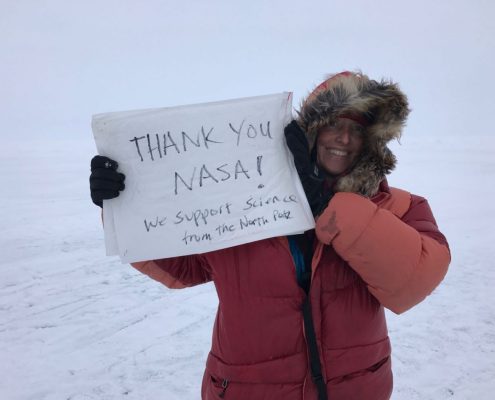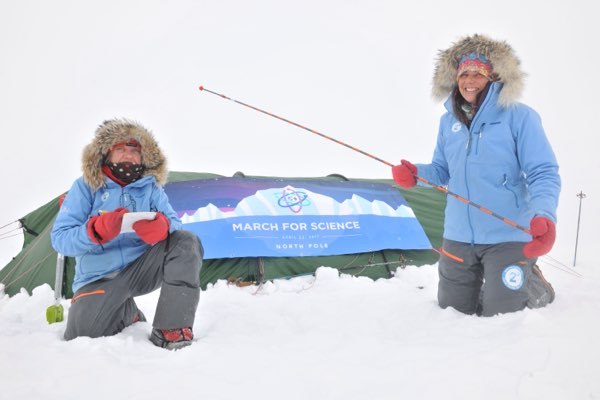March for Science North Pole Edition
Nobody should argue the sense of science. Science is to celebrate our brilliant minds everywhere in the world. Those who seek to understand the complexities of our planet, those who have inquisitive minds and are driven by a curiosity for knowledge. Scientists can help us move forward into solving our climate crisis that we ourselves have created. Climate change is one of the most challenging topics of science- we humans have never experienced it before. It is a moving target and we need to get all the geniuses together to mitigate the consequences of climate change - the biggest threat to our planet.
Scientists have not been comfortable to express an opinion about climate change in the last decades. Afraid of losing funding or face in front of peers. Most have stick to facts and models not to be pushed into statements or premature conclusions. But recently climate scientists have been categorized into radicals or climate deniers if they see climate change as a reality, polarized into believers and deniers. Often unfairly cornered by media, politics and even businesses, scientists are losing objectivity - the very foundation of science.
Science is not about believing, science is about methods, relativity, models, statistically relevance, track records and sampling and more models and sampling.
Science is about objectivity but passionate scientists or those who want to warn the world are considered alarmists. Record-breaking global temperatures and unprecedented attacks on government scientists and an administration that appears unwilling to accept—nevermind act on—well-established scientific facts.
Science, evidence, facts, and reason form the very foundation of a strong democracy—and they are under scrutinized like never before.

During the last three weeks I have supported scientists by marching to the North Pole, an extreme expedition of 224 km facing -40°C temperatures while still collecting data on the ice to support NASA/ESA and arctic scientists.
Our mission was a simple one: collecting snow measurements along a transact to be flown over by NASA Icebridge on April 6th.
This invaluable data is so desperately needed to understand ice thickness in relationship to snow.
Without this kind of knowledge of data, it would be hard to validate the snow radar in the Icebridge airplane and to understand the overall ice thickness which will have implications on the maximum extent and predictions of the health of the arctic and the world’s climate.
The importance of science in the Arctic is evident- we need not to discuss its value and its merit we need to support it and allow more of our resources. Arctic science is the enigma, the most important one of all climate science. The Arctic is the poster child of climate change - it is here were the changes are happening the fastest.
So we flew our banner of March for Science two days ago at the North Pole and we are joining tomorrow at UNIS here in Longyearbyen for the March of Science in Svalbard.

